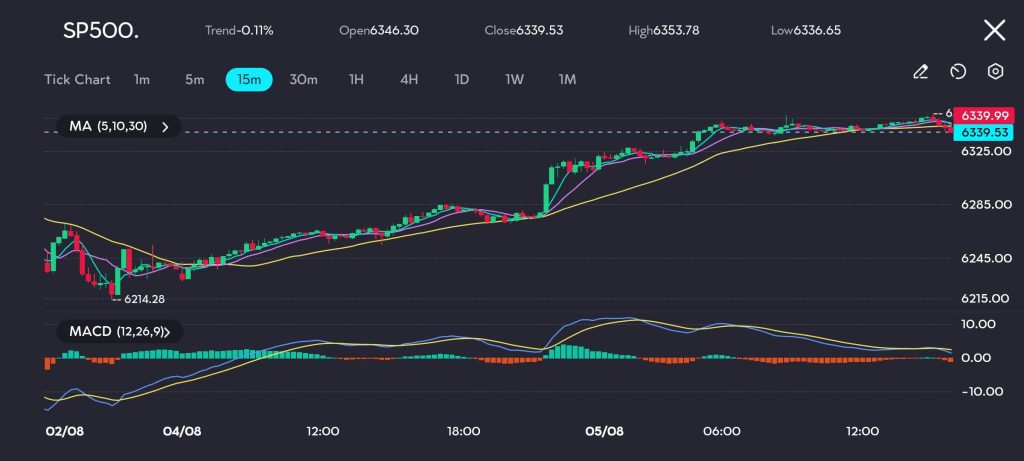
Markets opened the week on a positive note as signs of a slowing US economy raised hopes for interest rate cuts. While softer job data might typically worry investors, it’s now fuelling confidence that the Federal Reserve could ease policy – setting the tone for a cautious but optimistic August.
Wall Street rallies as traders bet on rate cut
The S&P 500 surged by 1.5% on Monday, driven by renewed buying interest across the market.
The bullish momentum followed a weaker-than-expected US jobs report, which strengthened investor expectations that the Federal Reserve could begin cutting interest rates as early as next month.
The benchmark index led the broader advance, with the Dow Jones Industrial Average climbing 585 points – a 1.3% gain – while the tech-focused Nasdaq Composite jumped 2%.
Notably, small-cap stocks also joined the rally, pointing to wider market participation beyond just mega-cap tech names.
This broad-based move suggests that investors quickly brushed off the initial concerns sparked by Friday’s disappointing employment data.
Cooling job market reshapes Fed outlook
Investor sentiment shifted significantly following the latest Non-Farm Payrolls report released last Friday.
The US economy added just 73,000 jobs in July – well below expectations – and revisions for May and June showed substantially lower figures than previously reported.
In response, market participants have drastically recalibrated their expectations for monetary policy.
According to futures markets, there is now a 92.1% chance the Federal Reserve will cut interest rates in September – up sharply from the 38% probability priced in before the jobs report was released.
This growing divergence between softening economic indicators and the Fed’s recent guidance has increased the likelihood of policy easing.
Last month’s Consumer Price Index (CPI) report added to this view, revealing that core inflation declined for a third straight month – further fuelling hopes of a rate cut.
Market analysis: August volatility poses fresh test for bulls
As traders enter August – a historically turbulent month for equities – caution may be warranted.
The Dow Jones Industrial Average has delivered its worst monthly performance in August since 1988, and similar seasonal weakness often affects both the S&P 500 and Nasdaq.
This backdrop means traders should be prepared for increased market volatility. The continuation of the recent rally will likely depend on incoming data that confirms a cooling US economy, maintaining pressure on the Federal Reserve to act.
Technically, the S&P 500 has shown strong gains since 2 August, as seen on the 15-minute chart, followed by a consolidation phase.
The early-week momentum appears to be fading, suggesting potential for a near-term pullback. Currently, the index sits at a pivotal level, with technical indicators pointing to possible downside risk.

Picture: SP500 hovers near 6340 after a rebound from 6214, but upside momentum appears to be fading, as seen on the VT Markets app.
The first key level to monitor is the lower boundary of the consolidation range at 6336.65. A break below this zone could lead to a test of deeper support.
The 30-period moving average – around 6325 – is another crucial marker. A close below this level would indicate the uptrend is losing steam and a more meaningful correction may be underway.
Looking ahead, traders are focused on the upcoming Initial Jobless Claims report due Thursday, 7 August.
This data release could either reinforce the market’s current optimism for rate cuts or challenge it – depending on whether further signs of labour market weakness emerge.
Click here to open account and start trading.





